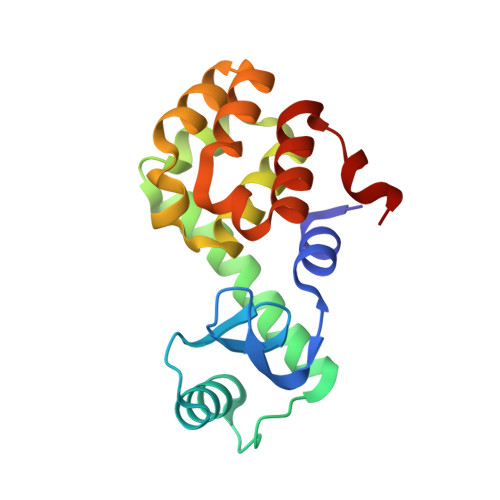Alanine-scanning mutagenesis of the beta-sheet region of phage T4 lysozyme suggests that tertiary context has a dominant effect on beta-sheet formation
He, M.M., Wood, Z.A., Baase, W.A., Xiao, H., Matthews, B.W.(2004) Protein Sci 13: 2716-2724
- PubMed: 15340171
- DOI: https://doi.org/10.1110/ps.04875504
- Primary Citation of Related Structures:
1SSW, 1SSY, 1T8F, 1T8G - PubMed Abstract:
In general, alpha-helical conformations in proteins depend in large part on the amino acid residues within the helix and their proximal interactions. For example, an alanine residue has a high propensity to adopt an alpha-helical conformation, whereas that of a glycine residue is low. The sequence preferences for beta-sheet formation are less obvious. To identify the factors that influence beta-sheet conformation, a series of scanning polyalanine mutations were made within the strands and associated turns of the beta-sheet region in T4 lysozyme. For each construct the stability of the folded protein was reduced substantially, consistent with removal of native packing interactions. However, the crystal structures showed that each of the mutants retained the beta-sheet conformation. These results suggest that the structure of the beta-sheet region of T4 lysozyme is maintained to a substantial extent by tertiary interactions with the surrounding parts of the protein. Such tertiary interactions may be important in determining the structures of beta-sheets in general.
- Institute of Molecular Biology, Howard Hughes Medical Institute and Department of Physics, 1229 University of Oregon, Eugene, OR 97403-1229, USA.
Organizational Affiliation:

















